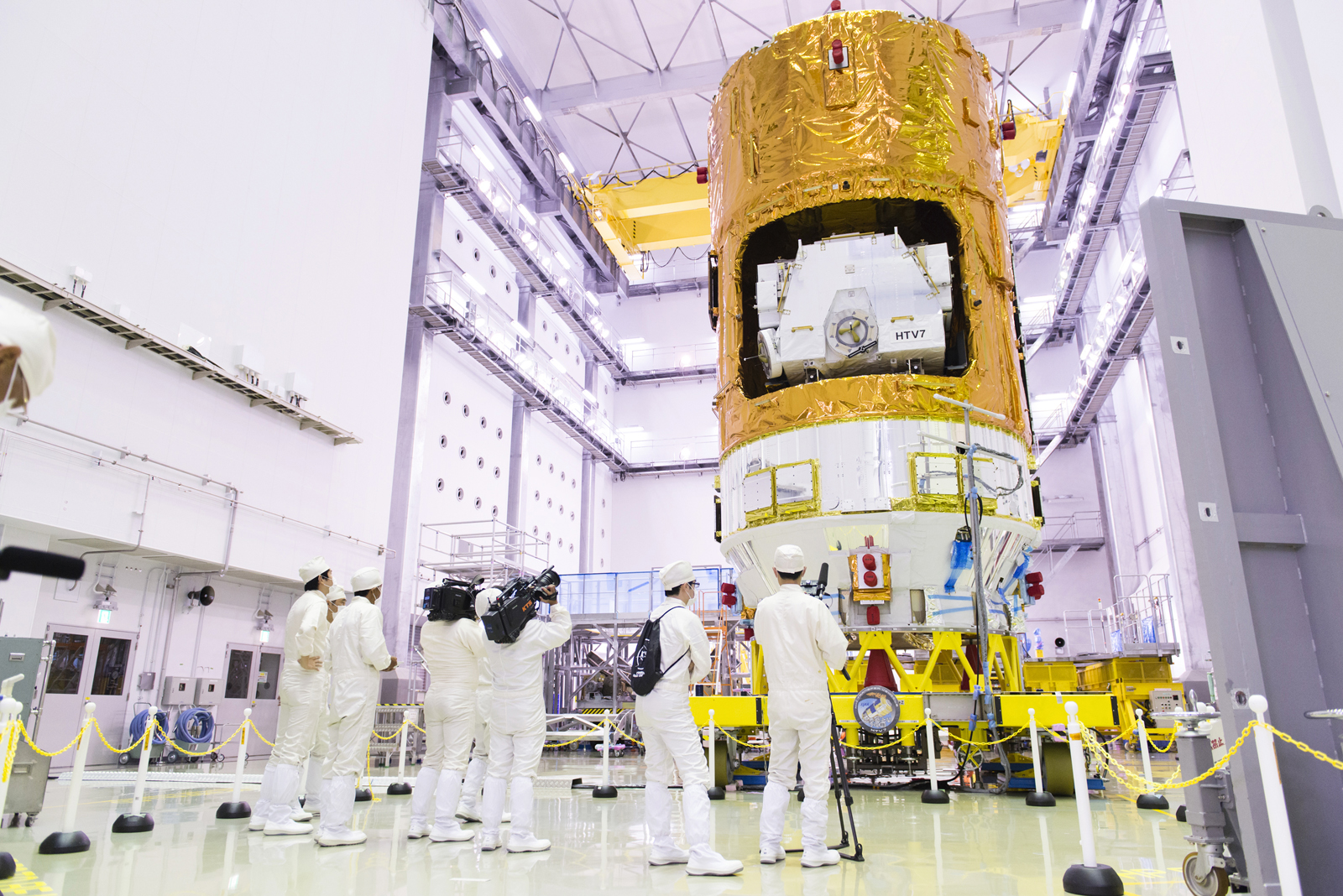Japanese Cargo Ship Gets New Launch Date for Space Station Delivery

Update for Sept. 20: Japan's space agency has delayed the launch of the Kounotori7 cargo ship to no earlier than Saturday, Sept. 21, at 1:52 p.m. EDT (1752 GMT/2:52 a.m. JST on Sept. 23) due to bad weather expected at the Tanegashima Space Center launch site. Our original preview story can be seen below.
The Japan Aerospace Exploration Agency has set a new launch date for its next uncrewed cargo ship bound for the International Space Station after more than a week of delays due to bad weather and technical issues.
The new Kounotori7 cargo ship will now launch Friday, Sept. 21, at 2:15 p.m. EDT (1815 GMT) from JAXA's launch site at the Tanegashima Space Center in southern Japan, where the local time at liftoff will be 3:15 a.m. on Sept. 22. Additional launch opportunities are available from Sept. 23 to Oct. 31, in case there are more delays, JAXA officials said.
Kountori7, JAXA's seventh automated H-II Transfer Vehicle resupply ship for the space station, was originally scheduled to launch more than 5 tons of supplies to the orbiting laboratory on Sept. 11 (Japan Standard Time), but bad weather from a typhoon forced flight controllers to delay the liftoff. JAXA attempted to launch Kounotori7 on Sept. 15 (JST), but a problem with the H-IIB rocket forced another delay. The H-IIB rocket was built for JAXA by Mitsubishi Heavy Industries (MHI). [Japan's Huge HTV Space Truck Explained (Infographic)]
"Necessity arose to investigate the H-IIB F7 propulsion system, forcing MHI and JAXA to cancel the launch previously rescheduled for September 15, 2018," JAXA officials wrote in an update today (Sept. 19). "MHI and JAXA have taken the course of action necessary to identify and deal with the cause that the investigation revealed."
JAXA's Kounotori resupply ships (their name means "White Stork" in Japanese) are disposable spacecraft designed to launch cargo and scientific gear to the International Space Station. The vehicles launch on an H-IIB rocket and rendezvous with the station, where they are captured by astronauts using a robotic arm and attached to an available docking port for unloading.
The Kounotori spacecraft can deliver supplies inside a pressurized compartment for astronauts to access, as well as in an unpressurized compartment accessible by robotic arm to deliver new science gear or components for the station's exterior. At the end of their missions, the vehicles are loaded up with trash or unneeded items and released back into space so they can be intentionally burned up in Earth's atmosphere.
Breaking space news, the latest updates on rocket launches, skywatching events and more!
Kounotori7 (also known as HTV-7) will deliver six new lithium-ion batteries for the space station's power system as part of its resupply mission. The spacecraft is also carrying a series of tiny satellites known as cubesats for various studies, including a highly anticipated space elevator technology test and a novel re-entry space capsule to test a new technique for returning experiment samples to Earth.
Email Tariq Malik at tmalik@space.com or follow him @tariqjmalik. Follow us @Spacedotcom, Facebook and Google+.

Tariq is the award-winning Editor-in-Chief of Space.com and joined the team in 2001. He covers human spaceflight, as well as skywatching and entertainment. He became Space.com's Editor-in-Chief in 2019. Before joining Space.com, Tariq was a staff reporter for The Los Angeles Times covering education and city beats in La Habra, Fullerton and Huntington Beach. He's a recipient of the 2022 Harry Kolcum Award for excellence in space reporting and the 2025 Space Pioneer Award from the National Space Society. He is an Eagle Scout and Space Camp alum with journalism degrees from the USC and NYU. You can find Tariq at Space.com and as the co-host to the This Week In Space podcast on the TWiT network. To see his latest project, you can follow Tariq on Twitter @tariqjmalik.
